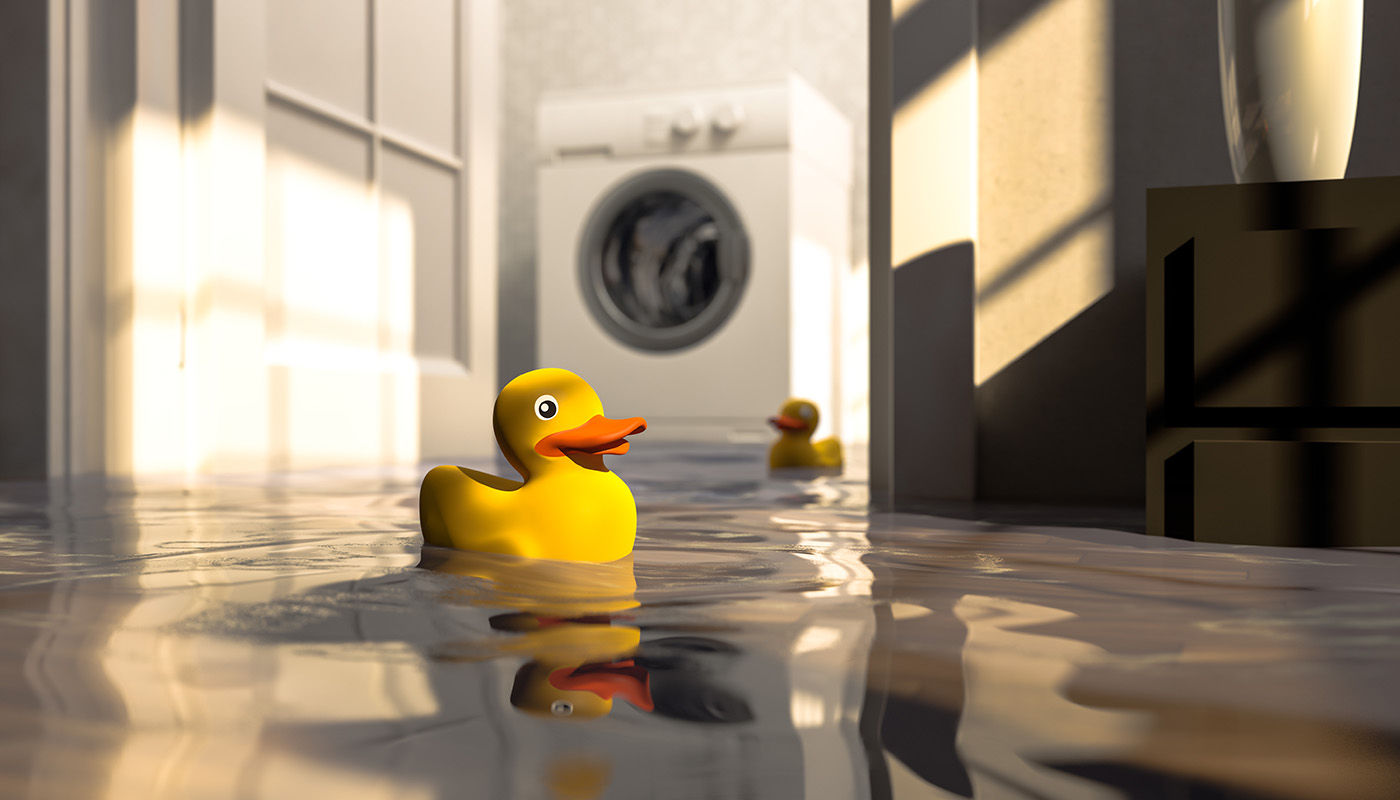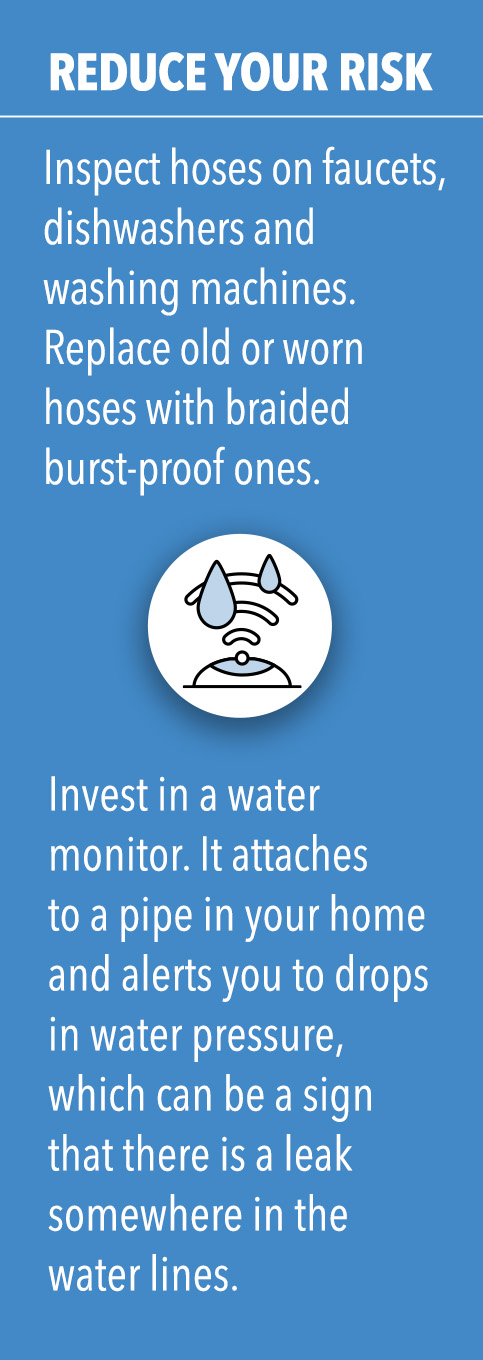Whether it’s just a leaky faucet with a drip, drip, drip or a burst water line doing its impression of Niagara Falls, plumbing problems—and the water damage associated with them—often require costly repairs. The average price to fix a leaking pipe is $150–$450, and burst pipes could run you $1,000–$4,000.
Here’s information about what to do if a plumbing problem arises, the role your insurance plays in paying for repairs, and how to prevent some plumbing emergencies in the first place.
Water, water everywhere
When the unthinkable happens and you have a full-blown emergency on your hands, take immediate steps to minimize the impact to your home.
- Shut off the main water valve to stop all water from flowing. This valve is typically located in the basement, a crawlspace or the garage, or near the front curb, depending on how your home was built (but it could also be other places, such as near the water heater or kitchen sink).
- If the leak is near any electrical wiring, switch off the electricity at the circuit breaker for safety.

- Document the damage with photographs before you start cleaning up any water. This can help when you submit a claim to your homeowners insurance provider.
- Remove the water and do what you can to help the drying process, including running a dehumidifier.
- Call a plumber. If you need service outside normal business hours, don’t be surprised if you have to pay emergency rates.
- Depending on the location and severity of the leak, you may also need to call cleaning and restoration experts. They can take steps to remove the hidden moisture in walls or crawlspaces to prevent further damage and mold growth.
Take a proactive step to home maintenance. Download this helpful checklist to keep your efforts on track.
Plumbing insurance to the rescue?
When it comes to your plumbing system, a standard homeowners insurance policy will usually cover sudden and accidental damage, but only within your coverage limits. (You’ll likely have to pay a deductible, and there’s even a chance that an expensive situation might go over the coverage limit set in your policy, leaving you to pay the difference out of pocket.)

The coverage may extend to damaged walls, floors, carpeting, furnishings and electronic equipment. And if property in a neighbor’s apartment or condo suffers damage, your insurance agent can help you determine if liability coverage in your homeowners insurance will pay for the repairs.
It’s also important to know what your homeowners insurance won’t cover: negligence or poor maintenance, water damage under a slab foundation, and sewer line backup and repair. And if your home was built sometime in the late 1970s through about the mid-1990s, it may have polybutylene piping, which has been excluded from coverage by almost all home insurers due to its tendency to break down when exposed to chlorine and other oxidants.
An ounce of prevention versus a pound of cure
Not all plumbing emergencies are preventable, but here are two steps you can take to mitigate problems:
- Inspect hoses on faucets, dishwashers and washing machines.
Replace old or worn hoses with braided stainless steel ones. - Invest in a water monitor. It attaches to a pipe in your home and alerts you to drops in water pressure, which could mean there’s a leak somewhere in the water lines.
Depending on where you live, one potential cause of damage to your plumbing could be freezing temperatures.
Freezing water expands, and when it does so in a supply line, it can block it and cause pressure to build between the blockage and a closed faucet, which can eventually cause the line to burst.
Here are some things you can do to reduce the chance of problems caused by freezing temperatures:
- Make sure your pipes are properly insulated. Use foam, rubber or fiberglass sleeves to insulate pipes in your basement or crawlspaces. Pipes that are prone to freezing can be insulated with UL-listed heat cable, available at home stores.


- If your water lines go through the garage, keep outside garage doors closed.
- Increase the airflow around indoor lines that are closed off under counters or inside cabinets; temperatures in these spaces can be significantly lower than the temperatures in the open area of your home, so open up cabinets and allow warm air to circulate.
- Will your home be vacant for a while? Leave the heat on, with the thermostat set no lower than 55 degrees. Shut off the main water valve, open all the taps and drainage valves, cut the power to the hot water heater and drain it, drain your water tank (if you have one), make sure the dishwasher and washing machine are drained, and cut the power to the well pump (if you have one). Ask your insurance agent what additional steps are required to maintain coverage under your current homeowners policy.
When in doubt about what is and isn’t covered by your homeowners insurance, read your policy or contact your agent. You may be able to buy optional plumbing insurance coverages to protect yourself, including flood insurance and riders or endorsements for water backup and mold.



